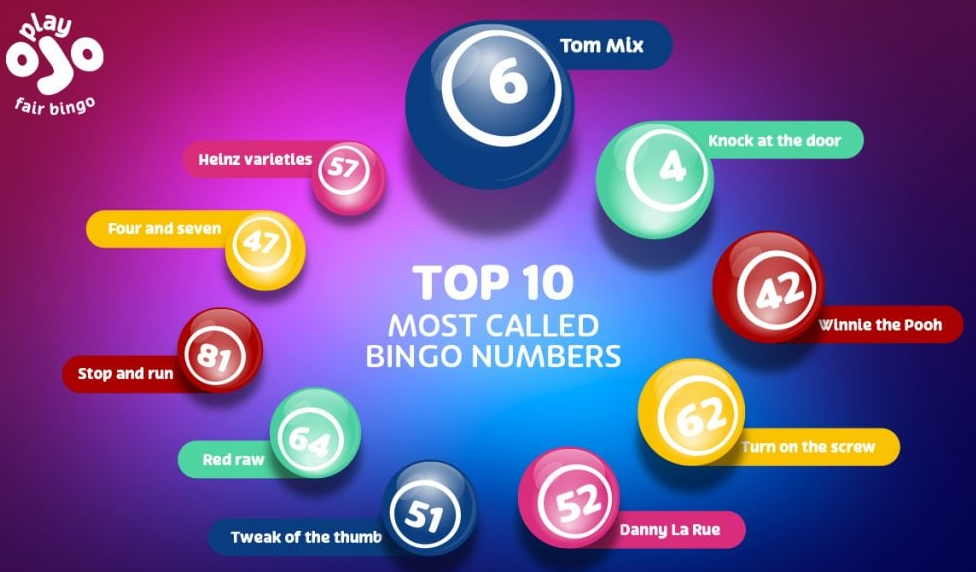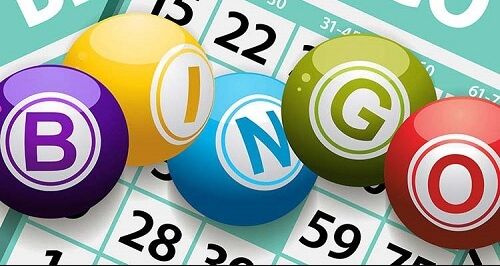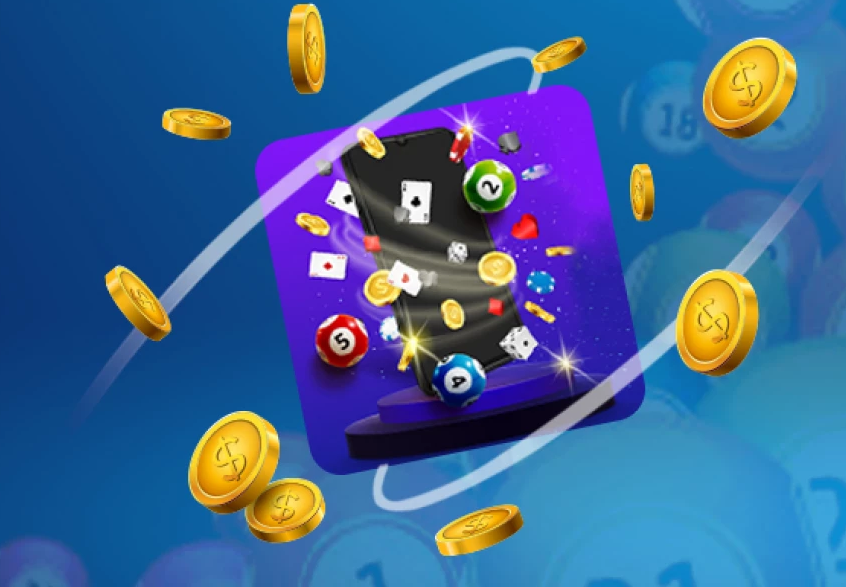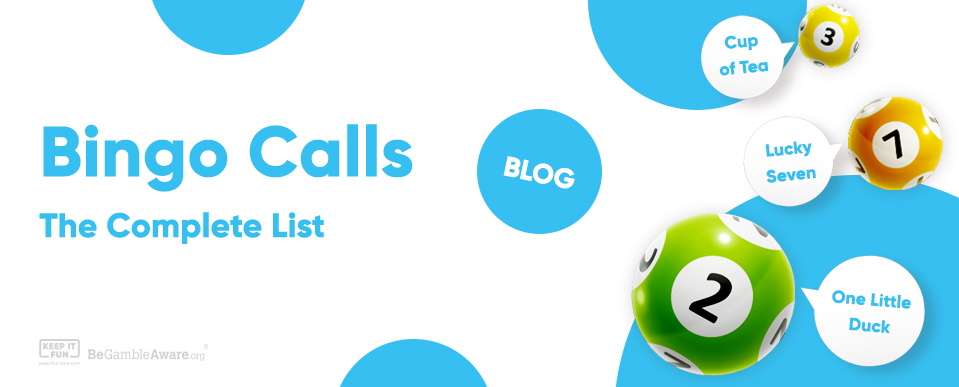There’s no specific number that hits most in bingo, as every draw is random, independent, and equally probable. Beliefs about ‘lucky numbers’ stem from psychological biases and cultural influences, not mathematical facts. Players cherish personal lucky numbers, but all numbers statistically have an equal chance of appearing.
The Mechanics of Bingo Numbers
Understanding the mechanics behind bingo numbers is crucial for anyone delving into the game, whether as a seasoned player, a beginner, or an enthusiast interested in the mathematical aspect of bingo.
How Bingo Numbers are Drawn
In traditional bingo, numbers are drawn using a random process that typically involves a mechanical mixer and balls with numbers printed on them. These balls are mixed to ensure a fair and unpredictable selection. In the digital era, online bingo games use sophisticated Random Number Generators (RNGs) to produce outcomes that are equally unpredictable. These RNGs are algorithm-driven and subject to rigorous testing to prevent patterns or predictability, ensuring the game’s fairness and integrity.
Range of Numbers in Different Bingo Versions
Bingo comes in multiple versions, and the range of numbers varies accordingly. The most common types include:
- 75-Ball Bingo: Predominant in North America, this version uses 75 numbers. Each card has five rows and five columns, with the central space typically marked as ‘free.’
- 90-Ball Bingo: More popular in the UK and Europe, the 90-ball version uses tickets with three rows and nine columns. It includes numbers from 1 to 90.
- 80-Ball Bingo: A less common variant, the 80-ball game is played with a card that features four rows and four columns, containing numbers usually ranging between 1 and 80.
Each variant’s structural differences inherently affect the game’s pace, strategies, and winning probabilities. The broader the range of numbers, the more unpredictable the game outcome, highlighting the game’s nature, where chance plays a more significant role than player skill.
This knowledge of number mechanics lays the groundwork for deeper insight into game strategy and understanding the statistical nuances involved in bingo.

Analyzing Bingo Number Occurrences
Delving into the heart of bingo requires an understanding of the occurrences of numbers, an aspect that fascinates statisticians and seasoned players alike. This analysis breaks down the statistical overview and common theories surrounding the intriguing world of number patterns in bingo.
Statistical Overview of Number Frequency
Statistics play a pivotal role in comprehending the intricacies of number occurrences in bingo.
However, as the game progresses, these probabilities can shift slightly for each subsequent call, given that numbers are not replaced once drawn. These shifts create a dynamic environment where predictive strategies often fall short, reinforcing the game’s reliance on chance and randomness.
In-depth statistical analyses often reveal no discernable bias towards any specific numbers within large data sets. This randomness underscores why seasoned players often maintain diverse card selections, thereby casting a wider ‘net’ to increase their likelihood of a match.
Common Theories About Number Patterns
Despite the overarching role of chance in bingo, several theories about number patterns continue to intrigue players. One prominent theory is the “Tippet Theory,” postulated by British statistician L.H.C Tippett. He suggested that in a 75-number game, the longer the play proceeds, the more likely the called numbers will gravitate towards the median number, 38 in this case. This theory implies that, at the start, numbers closer to 1 and 75 are more likely to be called, transitioning towards the middle range as the game advances.
Another concept is the “Granville Strategy,” developed by financial writer Joseph E. Granville, proposing a card selection method to ensure a uniform distribution of high and low, and even and odd numbers, increasing the card’s overall chance of hitting a number.
While these strategies provide intriguing methods for selecting bingo cards, they don’t guarantee wins. The uncertainty persists because bingo’s outcome heavily relies on chance, making the game more about the thrill of unpredictability than a showcase of strategic prowess.
Through understanding these analyses and theories, players and enthusiasts can appreciate the game’s complexity and the tantalizing blend of skill, strategy, and luck that keeps bingo enthusiasts coming back for more.
Most Common Numbers in Bingo
The concept of “hot” numbers is popular in games of chance, and bingo is no exception. While the game’s nature is inherently random, various factors contribute to the ongoing fascination with identifying the most common numbers in bingo, influencing player strategies and the overall excitement surrounding the game.
Historical Data on ‘Hot’ Numbers
Some dedicated players often track number occurrences over multiple sessions to identify any numbers that appear to be drawn more frequently. Although certain numbers may seem “hot” in the short term, extensive data reaffirms that each number statistically balances out over an extended period, affirming the game’s unpredictable essence.

Identifying Patterns and Probabilities
The allure of patterns in gambling is a psychological phenomenon often seen in bingo. Players may believe in “lucky” numbers, or they think they see patterns in numbers that are called frequently. However, given the random number generation involved in bingo, any patterns or predictability are purely coincidental, not indicative of an underlying system.
Yet, this doesn’t deter the search for strategies involving pattern identification. One approach is “probability tracking,” where players keep records of numbers drawn in each session, hypothesizing that numbers which haven’t appeared for a while are “due” to come up soon.
Another pattern-based strategy is the “symmetrical card” approach, where players choose cards with numbers that create symmetry, based on the assumption that this aesthetic arrangement increases the likelihood of a win. Like other strategies, while intriguing, its effectiveness remains unproven and subjective.
In essence, the chase for common numbers or patterns adds a thrilling layer of strategy and anticipation to bingo. However, it’s crucial for players to recognize that these theories and practices are forms of entertainment rather than foolproof strategies, underscoring the game’s core characteristic: a realm of chance where the next number is always a surprise.
Strategies for Choosing Bingo Numbers
Navigating the world of bingo is more exhilarating when players delve into various strategies for choosing numbers. While the game’s outcome is unpredictable, understanding these tactics adds a layer of skill and anticipation, making each session more engaging.
Selecting a Bingo Card
The first strategic decision players face is selecting a bingo card. Traditionalists who play physical bingo often prefer the tactile approach of scanning and choosing cards that feel lucky based on personal superstitions or visual appeal. In contrast, online bingo platforms often assign random cards, ensuring a level playing field and reinforcing the game’s impartiality.
However, some online venues offer a ‘card selection’ feature, where several strategic approaches come into play:
- Diversity Strategy: Players opt for cards with a broad spread of numbers, hoping to improve chances by not overlapping the same numbers on different cards.
- Granville’s Strategy: Based on Joseph E. Granville’s theory, players may seek cards with an equal number of high and low, and even and odd numbers, assuming a balanced card offers better odds.
- Tippett’s Strategy: Reflecting L.H.C Tippett’s hypothesis, some players choose cards with numbers closer to 1 and 75 for shorter games and numbers around 38 for longer games, based on the game’s expected duration.
These strategies, while not influencing the game’s random outcome, contribute to personalized playing experiences, allowing players to feel more in control of their fate in this game of chance.

Number Selection Techniques
Beyond card selection, enthusiasts often employ specific number selection techniques, adding depth to their playing style. These techniques, while varied, revolve around similar concepts of luck and prediction:
- Lucky Numbers: Many players swear by their lucky numbers, based on personal or cultural significance, choosing cards that feature these numbers whenever possible.
- Avoiding Repetitions: Some strategists propose avoiding numbers that won in the previous games, theorizing that they’re less likely to appear soon again. This technique, albeit common, contradicts the principle of statistical independence between games.
- Random Selection: Embracing the game’s essence, several players rely on pure randomness, choosing cards without any particular pattern or rationale, celebrating the unpredictability that defines bingo.
While these number selection techniques are widespread, their effectiveness is subjective. They serve more to enhance the enjoyment and personalized strategy of the game rather than altering the random nature of number drawing in bingo.
Principle of Random Number Generation (RNG)
Random Number Generation (RNG) is the heartbeat of fairness and unpredictability in bingo, particularly in its online variant. Here’s how it elevates the game:
- Fair Play Assurance: RNG systems undergo rigorous testing for quality and fairness, often by third-party agencies. These tests ensure that number generation lacks any bias and that game outcomes are genuinely unpredictable, adhering to the strict norms of fair gaming practices.
- Unpredictability Enhancement: By employing complex algorithms or physical randomness (in the case of traditional bingo), RNG systems reinforce the thrill, making it nearly impossible for players to predict or influence which numbers get called. This unpredictability is integral to bingo’s appeal, as the anticipation of the unknown adds excitement to each draw.
How Randomness Affects Game Outcomes
This level playing field highlights several key aspects:
- Strategy Limitation: While various number selection strategies exist, the randomness in bingo renders these tactics more about personal preference than actual influence over game outcomes. Each number drawn is an independent event, and the probability of any number appearing next is consistent, unaffected by previous draws.
- Psychological Impact: The random nature of the game creates a unique psychological space where hope and anticipation drive player engagement.
- Community Aspect: Since each player faces the same randomness, bingo fosters a sense of community, camaraderie, and shared excitement. The lack of competitive advantage based on skill encourages social interaction and shared experiences, integral to bingo culture.
Psychological Aspects of Number Selection
In the realm of bingo, the act of choosing numbers transcends logical strategy, delving into deep psychological drivers. Players often adhere to personal rituals or beliefs when selecting numbers, underscoring the game’s emotional and psychological dimensions. This complex interplay of mind and chance elevates the bingo experience, making it a rich study of human behavior.
The Gambler’s Fallacy in Bingo
The gambler’s fallacy, a common misconception in the world of chance-based games, thrives in bingo communities.
- Misunderstanding Randomness: Players may assume that a number drawn less frequently in previous games becomes ‘due’ and is more likely to appear in subsequent games. However, in a game governed by RNG, each number draw is an independent event, unaffected by prior selections.
- Influence on Number Selection: The fallacy significantly sways players’ choices. They might avoid ‘hot’ numbers that have appeared often recently, leaning towards those they feel are overdue. This strategy, based on a flawed understanding of probability, reflects the psychological comfort humans seek in perceived patterns.

Impact of Superstitions and Beliefs
Superstitions and personal beliefs heavily influence bingo players’ approaches to number selection, adding a subjective layer to the game’s objective structure.
- Lucky Numbers: Many players have numbers they consider lucky, often based on significant dates or life events. They tend to consistently choose cards featuring these numbers, a behavior that illustrates the psychological need to exert control over chance-based scenarios.
- Rituals and Charms: Beyond numbers, players might engage in rituals they believe can sway outcomes, like carrying lucky charms or performing specific routines before playing. While these actions don’t alter the odds, they contribute to a personal sense of optimism and security.
- Cultural Influences: Cultural beliefs shape players’ number choices. For instance, certain numbers hold different significances across cultures, influencing which numbers are deemed fortunate or best avoided. This cultural imprint adds diversity and depth to player strategies.
Legal and Ethical Considerations in Bingo Gaming
The arena of bingo gaming, while a source of entertainment, also necessitates a framework of legal and ethical considerations. Delving into these facets, we unravel the responsibilities and regulations that uphold the reputable nature of the game.
Fair Play and Game Integrity
Maintaining fair play is paramount in bingo, instilling confidence among participants and stakeholders alike. Several measures and protocols are in place to uphold this principle:
- Regulation Compliance: Bingo halls and online platforms must adhere to gaming regulations established by legal authorities.
- Auditing and Certification: To reinforce trust, independent bodies conduct regular audits of bingo operations. This scrutiny ensures adherence to fair play practices, with certifications awarded as proof of a game’s integrity. These certifications must be visibly displayed or communicated to players.
- Player Protection Measures: Responsible gaming also involves safeguarding players from fraudulent activities. Measures include secure payment systems, data privacy protocols, and transparent terms and conditions, all contributing to a safe gaming environment.
Regulations Governing Bingo Games
The regulatory landscape for bingo is diverse, with norms varying across jurisdictions. However, some universal tenets are widely accepted:
- Licensing Requirements: Operating a bingo game, whether land-based or online, requires obtaining a license from regulatory authorities. This process involves thorough assessments of the operator’s financial standing, security frameworks, and ethical track record.
- Age Restrictions: Bingo is a form of gambling; hence, preventing underage participation is crucial. Operators must rigorously enforce age checks, ensuring that players meet the legal age requirement, which typically stands at 18 or older depending on the region.
- Advertising Standards: Promotional content for bingo games is subject to strict regulations to prevent misleading or exaggerated claims. Marketing materials must offer a realistic view of winning chances, avoid targeting vulnerable groups, and not encourage reckless gambling behaviors.
- Bingo (U.S.) – Wikipedia
- Bingo (British version) – Wikipedia
- Gambling – Wikipedia
- Random number generation – Wikipedia
- Gambler’s fallacy – Wikipedia